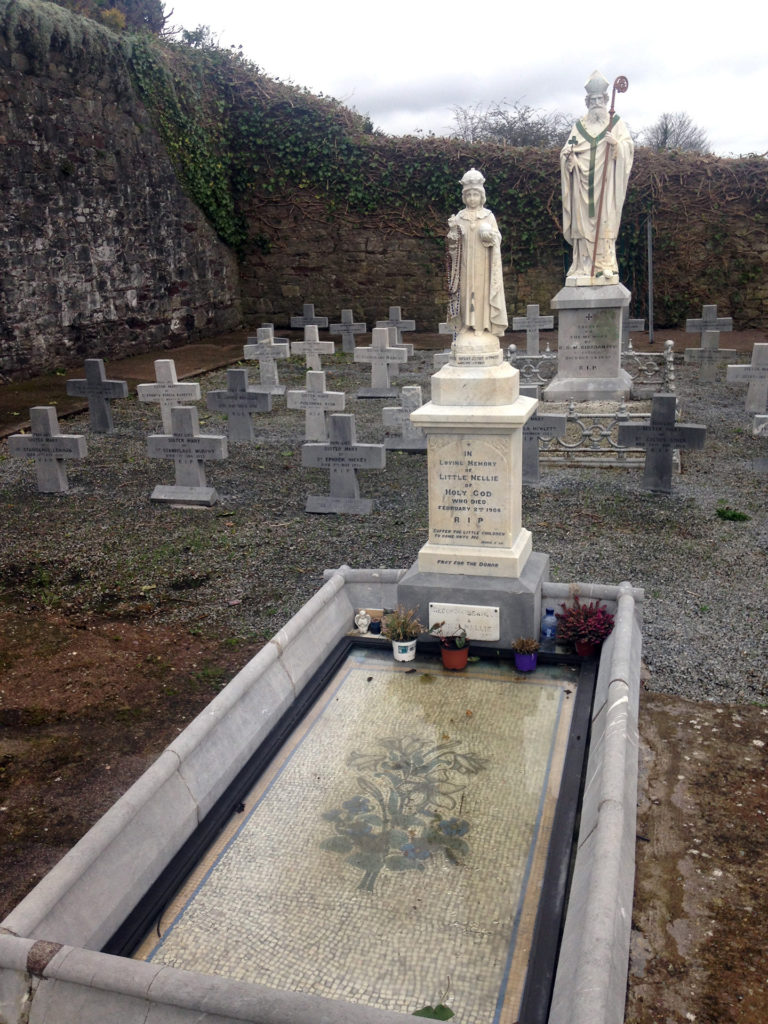There is much symbolism to the way the Magdalene dead have been mistreated in Cork’s Good Shepherd Magdalene Laundry (also an orphanage and industrial school) but former inmate Mary Harney’s harrowing testimony is a timely reminder of just how badly the living were treated.
In recent weeks, someone hung a white banner reading “Repeal the Seal” from two of the top windows of the ruins of Cork’s Good Shepherd convent, risking their own safety to do so. Since Halloween, the banner has come loose, flapping in the wind and lending yet another ghostly resonance to that lonesome, haunted place.
Last month, the Government, ignoring the concerns of survivors and opposition TDs alike, railroaded through the Oireachtas the Mother and Baby Homes Bill, leaving President Higgins – who had little choice but to sign the Bill into law – in the unusual position of releasing a statement in which he noted that his not referring the legislation to the Supreme Court “leaves it open to any citizen to challenge the provisions of the Bill in the future”.
The Bill allowed for the transfer of a database of 60,000 records created by the Commission of Investigation into Mother and Baby Homes to Tusla, the Child and Family Agency, while also allowing for many files and witness testimonies to be sealed for thirty years, despite the Data Protection Commissioner warning that to seal the archive would be an unlawful breach of GDPR.
Almost 200,000 people signed on Uplift.ie a petition by Aitheatas Adoptee Rights, and it soon became clear that Irish citizens and members of the diaspora were united behind the survivor community. As Majella Connolly, who was born in, and adopted from, the St Patrick’s Mother and Baby home on the Navan Road, told RTÉ’s Six-One News: “The nation seems to be behind us for the first time ever … but it’s the Government that’s rejecting us”.
The Government soon announced that survivors would, after all, be able to access their personal information, but it is fair to say that the Government’s handling of the issue, as Social Democrats TD Holly Cairns put it, “caused much hurt and upset to survivors”.
The Good Shepherd Laundry was established Sunday’s Well in Cork in 1870 and operated until 1977. During that time, in which the convent also operated as an orphanage and industrial school, thousands of women and children were incarcerated inside its grim red-brick walls.
Thanks to the power of marketing, and of sentimentality, one of those children has suffered a posthumous immortality.
Ellen Organ was born in Waterford in 1903, the youngest of four. Her father, William, served in the British Army. When Nellie was a baby, she was dropped by a babysitter and she suffered severe spinal injuries which left her in constant pain.
When Nellie was two, her father was transferred to Spike Island in Cork Harbour, bringing with him his family. It was there Nellie’s mother, Mary, fell fatally ill with tuberculosis, becoming, in her illness, fervently religious. She was, naturally, very close to her youngest child, telling Nellie many stories about “Holy God”.
When Mary died, William struggled to raise his children and they were placed in care. Nellie, then four, was sent with her sister to the Good Shepherd Convent. Nellie was in the care of the nuns for eight months and she spent most of that time in the infirmary.
As well as her chronic back-pain, she was also suffering from whooping cough and caries (a rotting disease of the mouth which eventually caused her jaw to disintegrate). Worse still, when Nellie arrived in Sunday’s Well, she was already dying of TB.
The nuns were astonished at Nellie’s religiosity, and successfully petitioned the then-bishop to grant her Holy Communion, then reserved for children over 12.
When Nellie died, stories of her holiness spread to Rome. Pope Pius X declared Nellie a sign from God and decreed the age of Communion be lowered to seven. A year after her death, the Good Shepherd nuns had Nellie’s body exhumed from St Joseph’s cemetery to be re-buried on their property. They claimed that when they opened her coffin, her body was perfectly preserved and all signs of decay had disappeared.
The cult of “Little Nellie of Holy God” was born, with Nellie becoming known as “the unofficial patron saint of Cork”. For much of the Twentieth Century, her grave in Sunday’s Well was a pilgrimage site. To this day, Little Nellie’s grave – the centrepiece of the nuns’ graveyard on the north-east of the Good Shepherd site – is well-maintained, even though the site has been largely inaccessible for several years.

As noted here before, Little Nellie and the nuns are not the only women buried on the Sunday’s Well site. There is at least one mass grave there. Away to the back of the derelict convent, up a sheer and dangerous hill, to the west and the north, behind ten-foot razor-wired walls, lie the pieces of a vandalised memorial stone cross.
Beneath, a mass grave containing an uncertain number of women who died in the Magdalene Laundry. Thirty names are recorded on the memorial but – as reported by Conall Ó Fátharta in the Irish Examiner – four of those women are also recorded as being buried, in two separate mass graves, in St Joseph’s Cemetery. One of those graves was only discovered by Justice For Magdalenes Research in 2012, when they also found a grave in Kilcully Cemetery. That grave appears to contain later burials from both the Good Shepherd and Peacock Lane laundries.
Mary Harney was born in the Bessborough Mother and Baby Home in 1949, and she spent the first two-and-a-half years of her life there with her mother, before being fostered to a family in Cork City. Neglected and abused there, she was removed from the foster home at the age of five and sent to the Good Shepherd.
In a harrowing interview with Órla Ryan in TheJournal.ie, Mary, who is now 71, recounted the horrific childhood she endured in Sunday’s Well. She said that from around the time she received her First Holy Communion at the age of seven, (thanks, in part, to Little Nellie,) she and other children “were polishing floors on our hands and knees, cleaning the headstones in the graveyard with wire brushes so that our knuckles were bleeding”.
“One of the things we had to do was what was called teasing a mattress. So, bear in mind that many of the children were emotionally and mentally disturbed, and they wet the bed.
“When we were assigned to work on these chores, one of the things we had to do was to slit open the horsehair mattress and take all the stuffing out of it. And we were in a room where there were no windows.
“These mattresses that were urine soaked, we had to tease the stuffing in them, the dust in them went up our noses. We would have to tease it from one side of the room, put it in the other side and then re-stuff the mattress with dry horsehair-type stuff.
“We had black snot for weeks after … nowadays, it would be considered a crime to make a child do that.”
I would urge you to read the interview in full. Mary is a brilliant advocate, with two master’s degrees, and she received first-class honours from NUI Galway for her latest thesis. She has interesting insights into where Ireland needs to go as we attempt to make peace with our shameful, misogynistic past.
It’s important to remember that while it’s striking to see the symbolism of Little Nellie of Holy God being buried there amongst the nuns’ clean crosses in a well-kept graveyard, even as an undetermined number of Magdalene women are buried in an almost inaccessible mass grave, it’s far more important to realise that a former inmate can tell us about the little girl she was, when she was made to scrub the nuns’ gravestones till her fingers bled.
As we await the publication of the final report of the Commission of Investigation into Mother and Baby Homes, it’s worth remembering how fortunate we are to have living witnesses like Mary Harney to the horror Ireland inflicted on generations of women and children.
Symbolism can be a powerful thing, but nothing beats testimony.








